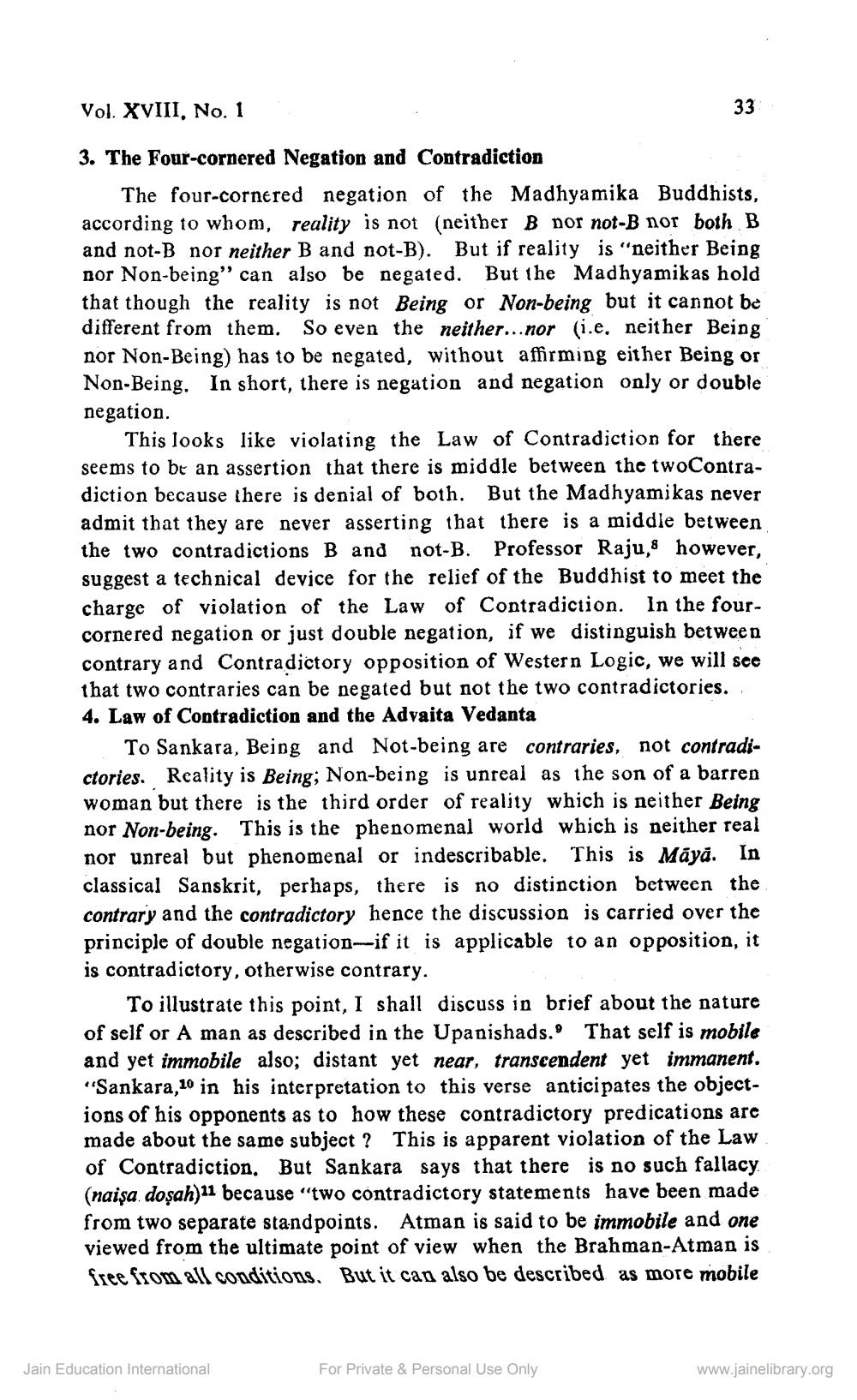________________
Vol. XVIII, No. 1
33
3. The Four-cornered Negation and Contradiction
The four-cornered negation of the Madhyamika Buddhists, according to whom, reality is not (neither B nor not-B nor both B and not-B nor neither B and not-B). But if reality is neither Being nor Non-being" can also be negated. But the Madhyamikas hold that though the reality is not Being or Non-being but it cannot be different from them. So even the neither...nor (i.e, neither Being nor Non-Being) has to be negated, without affirming either Being or Non-Being. In short, there is negation and negation only or double negation.
This looks like violating the Law of Contradiction for there seems to be an assertion that there is middle between the twoContradiction because there is denial of both. But the Madhyamikas never admit that they are never asserting that there is a middle between the two contradictions B and not-B. Professor Raju, however, suggest a technical device for the relief of the Buddhist to meet the charge of violation of the Law of Contradiction. In the fourcornered negation or just double negation, if we distinguish between contrary and Contradictory opposition of Western Logic, we will see that two contraries can be negated but not the two contradictories. 4. Law of Contradiction and the Advaita Vedanta
To Sankara, Being and Not-being are contraries, not contradictories. Reality is Being; Non-being is unreal as the son of a barren woman but there is the third order of reality which is neither Being nor Non-being. This is the phenomenal world which is neither real nor unreal but phenomenal or indescribable. This is Māya. In classical Sanskrit, perhaps, there is no distinction between the contrary and the contradictory hence the discussion is carried over the principle of double negation-if it is applicable to an opposition, it is contradictory, otherwise contrary.
To illustrate this point, I shall discuss in brief about the nature of self or A man as described in the Upanishads.' That self is mobile and yet immobile also; distant yet near, transcendent yet immanent.
Sankara, 10 in his interpretation to this verse anticipates the objections of his opponents as to how these contradictory predications are made about the same subject? This is apparent violation of the Law of Contradiction. But Sankara says that there is no such fallacy. (naisa doşah)11 because "two contradictory statements have been made from two separate standpoints. Atman is said to be immobile and one viewed from the ultimate point of view when the Brahman-Atman is free from all conditions. But it can also be described as more mobile
Jain Education International
For Private & Personal Use Only
www.jainelibrary.org




